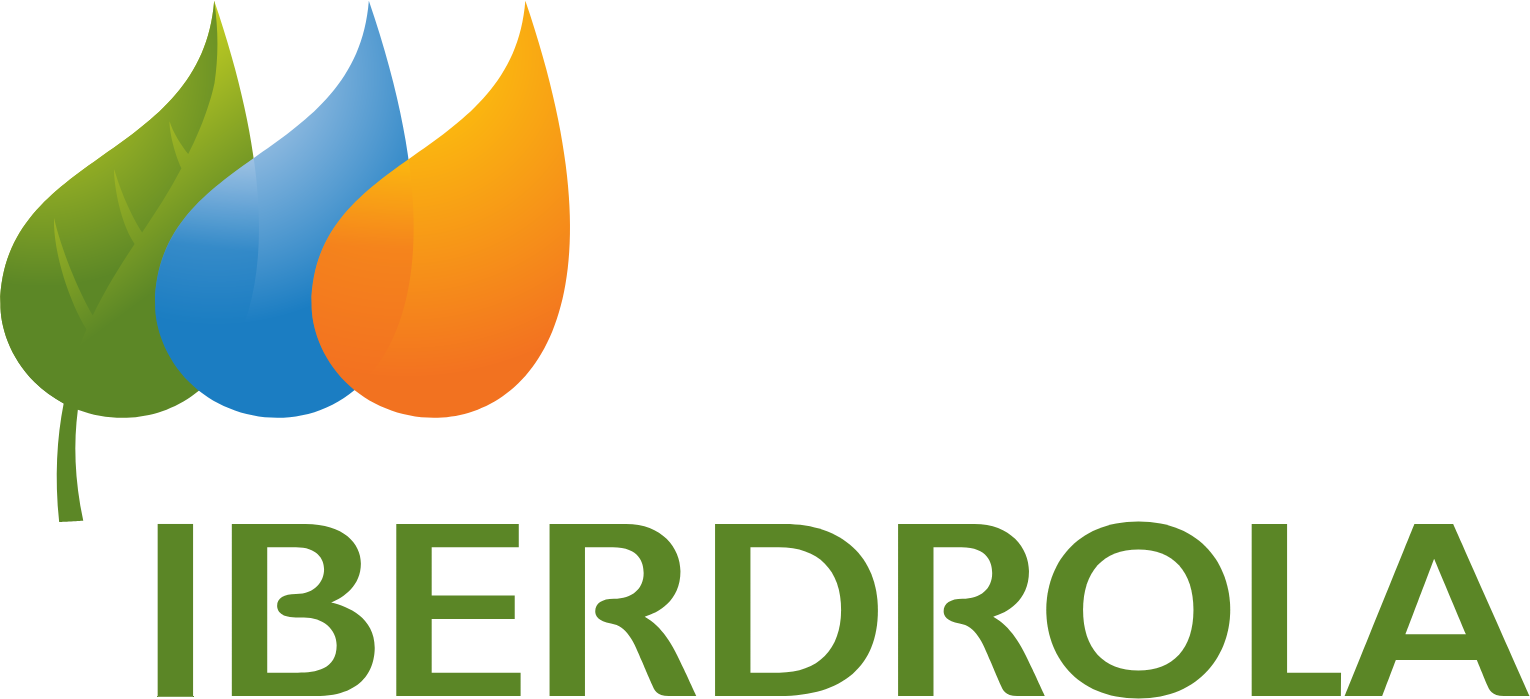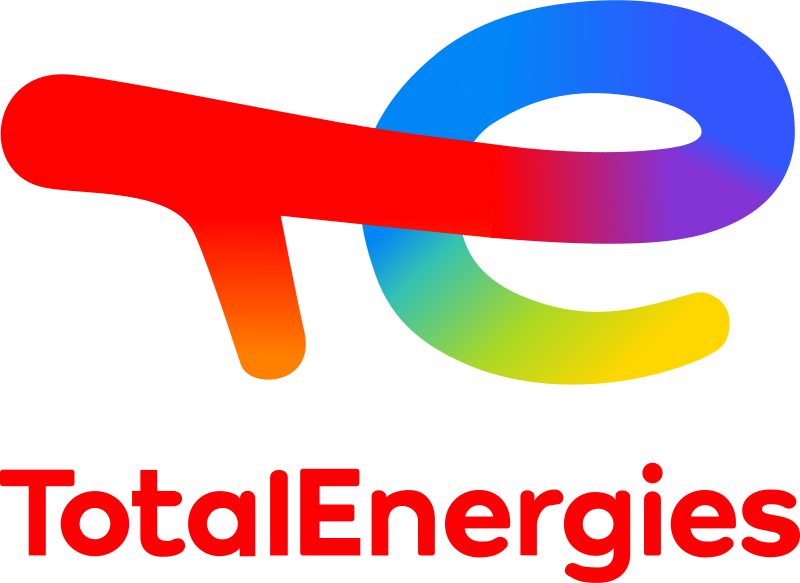A PV Micro Inverter, or photovoltaic microinverter, is a device used in solar power systems. It’s connected to individual solar panels and converts the DC (direct current) electricity generated by each panel into AC (alternating current) electricity. This improves system efficiency, as each panel operates independently, minimizing losses due to shading or panel variations, and allowing for easier monitoring of each panel’s performance. In terms of Revenue, the Global PV Micro Inverter Market was worth US$ 1.45 Bn in 2022, Anticipated to Witness CAGR of 14.3% During 2023 – 2031.
Global PV Micro Inverter Market Revenue & Forecast, (US$ Million), 2015 – 2031

Trends in the Global PV Micro Inverter Market
- The PV micro inverter market is currently experiencing a surge in the adoption of residential solar installations. Homeowners are increasingly seeking energy independence and sustainable solutions. This ongoing trend is driven by incentives such as tax credits and net metering, making residential solar more accessible and cost-effective. With the desire for clean energy sources, consumers continue to invest in solar panels paired with micro inverters, enabling efficient energy conversion and grid connectivity. The trend aligns with the rising awareness of environmental sustainability and energy cost savings.
- Micro inverter manufacturers are continuously integrating advanced monitoring and communication features into their products. This trend involves ongoing innovations like real-time data analytics, remote system monitoring, and smartphone apps for consumers to track energy production. These enhancements provide homeowners and installers with greater visibility into system performance, enabling timely maintenance and issue resolution. Such continuous improvements in monitoring technology contribute to the growing adoption of PV Micro Inverters, as consumers increasingly value the ability to monitor, control, and optimize their solar systems for maximum efficiency and savings.
Report Coverage and Deliverables:

Integrated system type has gained popularity in recent years and is anticipated to be the fastest growing segment in the global PV micro inverter market during the forecast period, primarily driven by advancements in technology and the desire for streamlined installations. Integrated micro inverters come pre-assembled with solar panels, simplifying the installation process. This study highlights the trend toward integrated solutions, citing their efficiency and reduced labor costs. Consumers and installers appreciate the convenience of a single unit that combines both solar panel and micro inverter, making solar installations quicker and more straightforward. This growth aligns with the market’s ongoing pursuit of efficiency and cost-effectiveness, especially in residential and small-scale commercial applications.
Residential end user segment had the highest share in the global PV micro inverter market in 2022, propelled by a growing trend towards residential solar adoption. Micro inverters’ popularity in residential settings is due to their ability to maximize energy production even in shaded areas and during variable sunlight conditions. Additionally, government incentives and net metering programs have encouraged homeowners to invest in solar installations, with micro inverters offering enhanced energy efficiency. This dominance is further underscored by the increasing demand for clean and sustainable energy solutions in residential communities worldwide.

Asia Pacific is expected to witness the highest growth rate in the PV micro inverter market during the forecast period. This study reveals that the region is experiencing a surge in solar installations, driven by an increasing awareness of energy efficiency and sustainability. Governments across Asia Pacific, including China and India, are actively promoting solar adoption through subsidies and incentives. Additionally, the region’s growing population and urbanization are propelling the demand for decentralized energy solutions, where micro inverters play a vital role. These factors, coupled with the region’s commitment to renewable energy, position Asia Pacific as the fastest-growing segment in the PV Micro Inverter market.
Competitors Landscape
Some of the players operating in the PV micro inverter market are
- ABB
- DARFON ELECTRONICS CORP
- Enphase Energy
- GE
- Shenzhen Kstar Science & Technology Co., Ltd.
- SMA Solar Technology AG
- SUNGROW
- SunPower Corporation
- TBEA
- TMEIC
- Other Industry Participants
Report Summary of Global PV Micro Inverter Market
| Report Specifications |
Details |
| Market Revenue in 2022 |
US$ 1.45 Billion |
| Market Size Forecast by 2031 |
US$ 2.65 Billion |
| Growth Rate (CAGR) |
14.3% |
| Historic Data |
2015 – 2021 |
| Base Year for Estimation |
2022 |
| Forecast Period |
2023 – 2031 |
| Report Inclusions |
Market Size & Estimates, Market Dynamics, Competitive Scenario, Trends, Growth Factors, Market Determinants, Key Investment Segmentation, Product/Service/Solutions Benchmarking |
| Segments Covered |
By System Type, By End User, By Power Class |
| Regions Covered |
North America, Europe, Asia Pacific, Middle East & Africa, Latin America |
| Countries Covered |
U.S., Canada, Mexico, Rest of North America, France, The UK, Spain, Germany, Italy, Nordic Countries (Denmark, Finland, Iceland, Sweden, Norway), Benelux Union (Belgium, The Netherlands, Luxembourg), Rest of Europe, China, Japan, India, New Zealand, Australia, South Korea, Southeast Asia (Indonesia, Thailand, Malaysia, Singapore, Rest of Southeast Asia), Rest of Asia Pacific, Saudi Arabia, UAE, Egypt, Kuwait, South Africa, Rest of Middle East & Africa, Brazil, Argentina, Rest of Latin America |
| Key Players |
ABB, DARFON ELECTRONICS CORP, Enphase Energy, GE, Shenzhen Kstar Science & Technology Co., Ltd., SMA Solar Technology AG, SUNGROW, SunPower Corporation, TBEA, TMEIC, Other Industry Participants |
| Customization Scope |
Customization allows for the inclusion/modification of content pertaining to geographical regions, countries, and specific market segments. |
| Pricing & Procurement Options |
Explore purchase options tailored to your specific research requirements |
| Contact Details |
Consult With Our Expert
Japan (Toll-Free): – +81 663-386-8111
South Korea (Toll-Free): – +82-808- 703-126
Saudi Arabia (Toll-Free): – +966 800 850 1643
United States: +1 302-232-5106
United Kingdom: +447537105080
E-mail: askanexpert@thenicheresearch.com
|
Global PV Micro Inverter Market
By System Type
By End User
- Residential
- Commercial
- Utility
By Power Class
By Region
- North America (U.S., Canada, Mexico, Rest of North America)
- Europe (France, The UK, Spain, Germany, Italy, Nordic Countries (Denmark, Finland, Iceland, Sweden, Norway), Benelux Union (Belgium, The Netherlands, Luxembourg), Rest of Europe)
- Asia Pacific (China, Japan, India, New Zealand, Australia, South Korea, Southeast Asia (Indonesia, Thailand, Malaysia, Singapore, Rest of Southeast Asia), Rest of Asia Pacific)
- Middle East & Africa (Saudi Arabia, UAE, Egypt, Kuwait, South Africa, Rest of Middle East & Africa)
- Latin America (Brazil, Argentina, Rest of Latin America)
Table of Contents
.
1.Market Scope
1.2.Years Considered
1.2.1.Historic Years: 2015 – 2021
1.2.3.Forecast Years: 2023 – 2031
3.Research Methodology
3.1.Primary Research
3.1.1.Research Questionnaire
3.1.2.Global Percentage Breakdown
3.1.3.Primary Interviews: Key Opinion Leaders (KOLs)
3.3.Market Size Estimates
3.4.Data Triangulation Methodology
4.Recommendations and Insights from TNR’s Perspective**
5.Holistic Overview of PV Micro Inverter Market
6.Market Synopsis: PV Micro Inverter Market
7.PV Micro Inverter Market Analysis: Qualitative Perspective
7.1.Introduction
7.1.2.Industry Development
7.3.Trends in PV Micro Inverter Market
7.4.Market Determinants Radar Chart
7.5.Macro-Economic and Micro-Economic Indicators: PV Micro Inverter Market
7.6.Impact of Covid-19 on PV Micro Inverter Market
8.Global PV Micro Inverter Market Analysis and Forecasts, 2023 – 2031
8.1.Overview
8.1.1.Global PV Micro Inverter Market Revenue (US$ Mn)
8.2.Global PV Micro Inverter Market Revenue (US$ Mn) and Forecasts, By System Type
8.2.1.Standalone
8.2.1.2.Market Estimation and Penetration, 2015 – 2022
8.2.1.3.Market Forecast, 2023 – 2031
8.2.1.4.Compound Annual Growth Rate (CAGR)
8.2.1.5.Regional Bifurcation
8.2.1.5.1.North America
8.2.1.5.1.1.Market Estimation, 2015 – 2022
8.2.1.5.1.2.Market Forecast, 2023 – 2031
8.2.1.5.2.Europe
8.2.1.5.2.1.Market Estimation, 2015 – 2022
8.2.1.5.2.2.Market Forecast, 2023 – 2031
8.2.1.5.3.Asia Pacific
8.2.1.5.3.1.Market Estimation, 2015 – 2022
8.2.1.5.3.2.Market Forecast, 2023 – 2031
8.2.1.5.4.Middle East and Africa
8.2.1.5.4.1.Market Estimation, 2015 – 2022
8.2.1.5.4.2.Market Forecast, 2023 – 2031
8.2.1.5.5.Latin America
8.2.1.5.5.1.Market Estimation, 2015 – 2022
8.2.1.5.5.2.Market Forecast, 2023 – 2031
8.2.2.Integrated
8.2.2.2.Market Estimation and Penetration, 2015 – 2022
8.2.2.3.Market Forecast, 2023 – 2031
8.2.2.4.Compound Annual Growth Rate (CAGR)
8.2.2.5.Regional Bifurcation
8.2.2.5.1.North America
8.2.2.5.1.1.Market Estimation, 2015 – 2022
8.2.2.5.1.2.Market Forecast, 2023 – 2031
8.2.2.5.2.Europe
8.2.2.5.2.1.Market Estimation, 2015 – 2022
8.2.2.5.2.2.Market Forecast, 2023 – 2031
8.2.2.5.3.Asia Pacific
8.2.2.5.3.1.Market Estimation, 2015 – 2022
8.2.2.5.3.2.Market Forecast, 2023 – 2031
8.2.2.5.4.Middle East and Africa
8.2.2.5.4.1.Market Estimation, 2015 – 2022
8.2.2.5.4.2.Market Forecast, 2023 – 2031
8.2.2.5.5.Latin America
8.2.2.5.5.1.Market Estimation, 2015 – 2022
8.2.2.5.5.2.Market Forecast, 2023 – 2031
8.3.Key Segment for Channeling Investments
9.Global PV Micro Inverter Market Analysis and Forecasts, 2023 – 2031
9.2.Global PV Micro Inverter Market Revenue (US$ Mn) and Forecasts, By End User
9.2.1.Residential
9.2.1.2.Market Estimation and Penetration, 2015 – 2022
9.2.1.3.Market Forecast, 2023 – 2031
9.2.1.4.Compound Annual Growth Rate (CAGR)
9.2.1.5.Regional Bifurcation
9.2.1.5.1.North America
9.2.1.5.1.1.Market Estimation, 2015 – 2022
9.2.1.5.1.2.Market Forecast, 2023 – 2031
9.2.1.5.2.Europe
9.2.1.5.2.1.Market Estimation, 2015 – 2022
9.2.1.5.2.2.Market Forecast, 2023 – 2031
9.2.1.5.3.Asia Pacific
9.2.1.5.3.1.Market Estimation, 2015 – 2022
9.2.1.5.3.2.Market Forecast, 2023 – 2031
9.2.1.5.4.Middle East and Africa
9.2.1.5.4.1.Market Estimation, 2015 – 2022
9.2.1.5.4.2.Market Forecast, 2023 – 2031
9.2.1.5.5.Latin America
9.2.1.5.5.1.Market Estimation, 2015 – 2022
9.2.1.5.5.2.Market Forecast, 2023 – 2031
9.2.2.Commercial
9.2.2.2.Market Estimation and Penetration, 2015 – 2022
9.2.2.3.Market Forecast, 2023 – 2031
9.2.2.4.Compound Annual Growth Rate (CAGR)
9.2.2.5.Regional Bifurcation
9.2.2.5.1.North America
9.2.2.5.1.1.Market Estimation, 2015 – 2022
9.2.2.5.1.2.Market Forecast, 2023 – 2031
9.2.2.5.2.Europe
9.2.2.5.2.1.Market Estimation, 2015 – 2022
9.2.2.5.2.2.Market Forecast, 2023 – 2031
9.2.2.5.3.Asia Pacific
9.2.2.5.3.1.Market Estimation, 2015 – 2022
9.2.2.5.3.2.Market Forecast, 2023 – 2031
9.2.2.5.4.Middle East and Africa
9.2.2.5.4.1.Market Estimation, 2015 – 2022
9.2.2.5.4.2.Market Forecast, 2023 – 2031
9.2.2.5.5.Latin America
9.2.2.5.5.1.Market Estimation, 2015 – 2022
9.2.2.5.5.2.Market Forecast, 2023 – 2031
9.2.3.Utility
9.2.3.2.Market Estimation and Penetration, 2015 – 2022
9.2.3.3.Market Forecast, 2023 – 2031
9.2.3.4.Compound Annual Growth Rate (CAGR)
9.2.3.5.Regional Bifurcation
9.2.3.5.1.North America
9.2.3.5.1.1.Market Estimation, 2015 – 2022
9.2.3.5.1.2.Market Forecast, 2023 – 2031
9.2.3.5.2.Europe
9.2.3.5.2.1.Market Estimation, 2015 – 2022
9.2.3.5.2.2.Market Forecast, 2023 – 2031
9.2.3.5.3.Asia Pacific
9.2.3.5.3.1.Market Estimation, 2015 – 2022
9.2.3.5.3.2.Market Forecast, 2023 – 2031
9.2.3.5.4.Middle East and Africa
9.2.3.5.4.1.Market Estimation, 2015 – 2022
9.2.3.5.4.2.Market Forecast, 2023 – 2031
9.2.3.5.5.Latin America
9.2.3.5.5.1.Market Estimation, 2015 – 2022
9.2.3.5.5.2.Market Forecast, 2023 – 2031
9.3.Key Segment for Channeling Investments
10.Global PV Micro Inverter Market Analysis and Forecasts, 2023 – 2031
10.2.Global PV Micro Inverter Market Revenue (US$ Mn) and Forecasts, By Power Class
10.2.1.Single Phase
10.2.1.2.Market Estimation and Penetration, 2015 – 2022
10.2.1.3.Market Forecast, 2023 – 2031
10.2.1.4.Compound Annual Growth Rate (CAGR)
10.2.1.5.Regional Bifurcation
10.2.1.5.1.North America
10.2.1.5.1.1.Market Estimation, 2015 – 2022
10.2.1.5.1.2.Market Forecast, 2023 – 2031
10.2.1.5.2.Europe
10.2.1.5.2.1.Market Estimation, 2015 – 2022
10.2.1.5.2.2.Market Forecast, 2023 – 2031
10.2.1.5.3.Asia Pacific
10.2.1.5.3.1.Market Estimation, 2015 – 2022
10.2.1.5.3.2.Market Forecast, 2023 – 2031
10.2.1.5.4.Middle East and Africa
10.2.1.5.4.1.Market Estimation, 2015 – 2022
10.2.1.5.4.2.Market Forecast, 2023 – 2031
10.2.1.5.5.Latin America
10.2.1.5.5.1.Market Estimation, 2015 – 2022
10.2.1.5.5.2.Market Forecast, 2023 – 2031
10.2.2.Three Phase
10.2.2.2.Market Estimation and Penetration, 2015 – 2022
10.2.2.3.Market Forecast, 2023 – 2031
10.2.2.4.Compound Annual Growth Rate (CAGR)
10.2.2.5.Regional Bifurcation
10.2.2.5.1.North America
10.2.2.5.1.1.Market Estimation, 2015 – 2022
10.2.2.5.1.2.Market Forecast, 2023 – 2031
10.2.2.5.2.Europe
10.2.2.5.2.1.Market Estimation, 2015 – 2022
10.2.2.5.2.2.Market Forecast, 2023 – 2031
10.2.2.5.3.Asia Pacific
10.2.2.5.3.1.Market Estimation, 2015 – 2022
10.2.2.5.3.2.Market Forecast, 2023 – 2031
10.2.2.5.4.Middle East and Africa
10.2.2.5.4.1.Market Estimation, 2015 – 2022
10.2.2.5.4.2.Market Forecast, 2023 – 2031
10.2.2.5.5.Latin America
10.2.2.5.5.1.Market Estimation, 2015 – 2022
10.2.2.5.5.2.Market Forecast, 2023 – 2031
10.3.Key Segment for Channeling Investments
11.North America PV Micro Inverter Market Analysis and Forecasts, 2023 – 2031
11.1.Overview
11.1.1.North America PV Micro Inverter Market Revenue (US$ Mn)
11.2.North America PV Micro Inverter Market Revenue (US$ Mn) and Forecasts, By System Type
11.3.North America PV Micro Inverter Market Revenue (US$ Mn) and Forecasts, By End User
11.4.North America PV Micro Inverter Market Revenue (US$ Mn) and Forecasts, By Power Class
11.5.North America PV Micro Inverter Market Revenue (US$ Mn) and Forecasts, By Country
11.5.1.U.S
11.5.1.1.U.S PV Micro Inverter Market Revenue (US$ Mn) and Forecasts, By System Type
11.5.1.2.U.S PV Micro Inverter Market Revenue (US$ Mn) and Forecasts, By End User
11.5.1.3.U.S PV Micro Inverter Market Revenue (US$ Mn) and Forecasts, By Power Class
11.5.2.Canada
11.5.2.1.Canada PV Micro Inverter Market Revenue (US$ Mn) and Forecasts, By System Type
11.5.2.2.Canada PV Micro Inverter Market Revenue (US$ Mn) and Forecasts, By End User
11.5.2.3.Canada PV Micro Inverter Market Revenue (US$ Mn) and Forecasts, By Power Class
11.5.3.Mexico
11.5.3.1.Mexico PV Micro Inverter Market Revenue (US$ Mn) and Forecasts, By System Type
11.5.3.2.Mexico PV Micro Inverter Market Revenue (US$ Mn) and Forecasts, By End User
11.5.3.3.Mexico PV Micro Inverter Market Revenue (US$ Mn) and Forecasts, By Power Class
11.5.4.Rest of North America
11.5.4.1.Rest of North America PV Micro Inverter Market Revenue (US$ Mn) and Forecasts, By System Type
11.5.4.2.Rest of North America PV Micro Inverter Market Revenue (US$ Mn) and Forecasts, By End User
11.5.4.3.Rest of North America PV Micro Inverter Market Revenue (US$ Mn) and Forecasts, By Power Class
11.6.Key Segment for Channeling Investments
12.Europe PV Micro Inverter Market Analysis and Forecasts, 2023 – 2031
12.1.Overview
12.1.1.Europe PV Micro Inverter Market Revenue (US$ Mn)
12.2.Europe PV Micro Inverter Market Revenue (US$ Mn) and Forecasts, By System Type
12.3.Europe PV Micro Inverter Market Revenue (US$ Mn) and Forecasts, By End User
12.4.Europe PV Micro Inverter Market Revenue (US$ Mn) and Forecasts, By Power Class
12.5.Europe PV Micro Inverter Market Revenue (US$ Mn) and Forecasts, By Country
12.5.1.France
12.5.1.1.France PV Micro Inverter Market Revenue (US$ Mn) and Forecasts, By System Type
12.5.1.2.France PV Micro Inverter Market Revenue (US$ Mn) and Forecasts, By End User
12.5.1.3.France PV Micro Inverter Market Revenue (US$ Mn) and Forecasts, By Power Class
12.5.2.The UK
12.5.2.1.The UK PV Micro Inverter Market Revenue (US$ Mn) and Forecasts, By System Type
12.5.2.2.The UK PV Micro Inverter Market Revenue (US$ Mn) and Forecasts, By End User
12.5.2.3.The UK PV Micro Inverter Market Revenue (US$ Mn) and Forecasts, By Power Class
12.5.3.Spain
12.5.3.1.Spain PV Micro Inverter Market Revenue (US$ Mn) and Forecasts, By System Type
12.5.3.2.Spain PV Micro Inverter Market Revenue (US$ Mn) and Forecasts, By End User
12.5.3.3.Spain PV Micro Inverter Market Revenue (US$ Mn) and Forecasts, By Power Class
12.5.4.Germany
12.5.4.1.Germany PV Micro Inverter Market Revenue (US$ Mn) and Forecasts, By System Type
12.5.4.2.Germany PV Micro Inverter Market Revenue (US$ Mn) and Forecasts, By End User
12.5.4.3.Germany PV Micro Inverter Market Revenue (US$ Mn) and Forecasts, By Power Class
12.5.5.Italy
12.5.5.1.Italy PV Micro Inverter Market Revenue (US$ Mn) and Forecasts, By System Type
12.5.5.2.Italy PV Micro Inverter Market Revenue (US$ Mn) and Forecasts, By End User
12.5.5.3.Italy PV Micro Inverter Market Revenue (US$ Mn) and Forecasts, By Power Class
12.5.6.Nordic Countries
12.5.6.1.Nordic Countries PV Micro Inverter Market Revenue (US$ Mn) and Forecasts, By System Type
12.5.6.2.Nordic Countries PV Micro Inverter Market Revenue (US$ Mn) and Forecasts, By End User
12.5.6.3.Nordic Countries PV Micro Inverter Market Revenue (US$ Mn) and Forecasts, By Power Class
12.5.6.4.Nordic Countries PV Micro Inverter Market Revenue (US$ Mn) and Forecasts, By Country
12.5.7.Benelux Union
12.5.7.1.Benelux Union PV Micro Inverter Market Revenue (US$ Mn) and Forecasts, By System Type
12.5.7.2.Benelux Union PV Micro Inverter Market Revenue (US$ Mn) and Forecasts, By End User
12.5.7.3.Benelux Union PV Micro Inverter Market Revenue (US$ Mn) and Forecasts, By Power Class
12.5.7.4.Benelux Union PV Micro Inverter Market Revenue (US$ Mn) and Forecasts, By Country
12.5.7.4.2.The Netherlands
12.5.8.Rest of Europe
12.5.8.1.Rest of Europe PV Micro Inverter Market Revenue (US$ Mn) and Forecasts, By System Type
12.5.8.2.Rest of Europe PV Micro Inverter Market Revenue (US$ Mn) and Forecasts, By End User
12.5.8.3.Rest of Europe PV Micro Inverter Market Revenue (US$ Mn) and Forecasts, By Power Class
12.6.Key Segment for Channeling Investments
13.Asia Pacific PV Micro Inverter Market Analysis and Forecasts, 2023 – 2031
13.1.Overview
13.1.1.Asia Pacific PV Micro Inverter Market Revenue (US$ Mn)
13.2.Asia Pacific PV Micro Inverter Market Revenue (US$ Mn) and Forecasts, By System Type
13.3.Asia Pacific PV Micro Inverter Market Revenue (US$ Mn) and Forecasts, By End User
13.4.Asia Pacific PV Micro Inverter Market Revenue (US$ Mn) and Forecasts, By Power Class
13.5.Asia Pacific PV Micro Inverter Market Revenue (US$ Mn) and Forecasts, By Country
13.5.1.China
13.5.1.1.China PV Micro Inverter Market Revenue (US$ Mn) and Forecasts, By System Type
13.5.1.2.China PV Micro Inverter Market Revenue (US$ Mn) and Forecasts, By End User
13.5.1.3.China PV Micro Inverter Market Revenue (US$ Mn) and Forecasts, By Power Class
13.5.2.Japan
13.5.2.1.Japan PV Micro Inverter Market Revenue (US$ Mn) and Forecasts, By System Type
13.5.2.2.Japan PV Micro Inverter Market Revenue (US$ Mn) and Forecasts, By End User
13.5.2.3.Japan PV Micro Inverter Market Revenue (US$ Mn) and Forecasts, By Power Class
13.5.3.India
13.5.3.1.India PV Micro Inverter Market Revenue (US$ Mn) and Forecasts, By System Type
13.5.3.2.India PV Micro Inverter Market Revenue (US$ Mn) and Forecasts, By End User
13.5.3.3.India PV Micro Inverter Market Revenue (US$ Mn) and Forecasts, By Power Class
13.5.4.New Zealand
13.5.4.1.New Zealand PV Micro Inverter Market Revenue (US$ Mn) and Forecasts, By System Type
13.5.4.2.New Zealand PV Micro Inverter Market Revenue (US$ Mn) and Forecasts, By End User
13.5.4.3.New Zealand PV Micro Inverter Market Revenue (US$ Mn) and Forecasts, By Power Class
13.5.5.Australia
13.5.5.1.Australia PV Micro Inverter Market Revenue (US$ Mn) and Forecasts, By System Type
13.5.5.2.Australia PV Micro Inverter Market Revenue (US$ Mn) and Forecasts, By End User
13.5.5.3.Australia PV Micro Inverter Market Revenue (US$ Mn) and Forecasts, By Power Class
13.5.6.South Korea
13.5.6.1.South Korea PV Micro Inverter Market Revenue (US$ Mn) and Forecasts, By System Type
13.5.6.2.South Korea PV Micro Inverter Market Revenue (US$ Mn) and Forecasts, By End User
13.5.6.3.South Korea PV Micro Inverter Market Revenue (US$ Mn) and Forecasts, By Power Class
13.5.7.Southeast Asia
13.5.7.1.Southeast Asia PV Micro Inverter Market Revenue (US$ Mn) and Forecasts, By System Type
13.5.7.2.Southeast Asia PV Micro Inverter Market Revenue (US$ Mn) and Forecasts, By End User
13.5.7.3.Southeast Asia PV Micro Inverter Market Revenue (US$ Mn) and Forecasts, By Power Class
13.5.7.4.Southeast Asia PV Micro Inverter Market Revenue (US$ Mn) and Forecasts, By Country
13.5.7.4.5.Rest of Southeast Asia
13.5.8.Rest of Asia Pacific
13.5.8.1.Rest of Asia Pacific PV Micro Inverter Market Revenue (US$ Mn) and Forecasts, By System Type
13.5.8.2.Rest of Asia Pacific PV Micro Inverter Market Revenue (US$ Mn) and Forecasts, By End User
13.5.8.3.Rest of Asia Pacific PV Micro Inverter Market Revenue (US$ Mn) and Forecasts, By Power Class
13.6.Key Segment for Channeling Investments
14.Middle East and Africa PV Micro Inverter Market Analysis and Forecasts, 2023 – 2031
14.1.Overview
14.1.1.Middle East and Africa PV Micro Inverter Market Revenue (US$ Mn)
14.2.Middle East and Africa PV Micro Inverter Market Revenue (US$ Mn) and Forecasts, By System Type
14.3.Middle East and Africa PV Micro Inverter Market Revenue (US$ Mn) and Forecasts, By End User
14.4.Middle East and Africa PV Micro Inverter Market Revenue (US$ Mn) and Forecasts, By Power Class
14.5.Middle East and Africa PV Micro Inverter Market Revenue (US$ Mn) and Forecasts, By Country
14.5.1.Saudi Arabia
14.5.1.1.Saudi Arabia PV Micro Inverter Market Revenue (US$ Mn) and Forecasts, By System Type
14.5.1.2.Saudi Arabia PV Micro Inverter Market Revenue (US$ Mn) and Forecasts, By End User
14.5.1.3.Saudi Arabia PV Micro Inverter Market Revenue (US$ Mn) and Forecasts, By Power Class
14.5.2.UAE
14.5.2.1.UAE PV Micro Inverter Market Revenue (US$ Mn) and Forecasts, By System Type
14.5.2.2.UAE PV Micro Inverter Market Revenue (US$ Mn) and Forecasts, By End User
14.5.2.3.UAE PV Micro Inverter Market Revenue (US$ Mn) and Forecasts, By Power Class
14.5.3.Egypt
14.5.3.1.Egypt PV Micro Inverter Market Revenue (US$ Mn) and Forecasts, By System Type
14.5.3.2.Egypt PV Micro Inverter Market Revenue (US$ Mn) and Forecasts, By End User
14.5.3.3.Egypt PV Micro Inverter Market Revenue (US$ Mn) and Forecasts, By Power Class
14.5.4.Kuwait
14.5.4.1.Kuwait PV Micro Inverter Market Revenue (US$ Mn) and Forecasts, By System Type
14.5.4.2.Kuwait PV Micro Inverter Market Revenue (US$ Mn) and Forecasts, By End User
14.5.4.3.Kuwait PV Micro Inverter Market Revenue (US$ Mn) and Forecasts, By Power Class
14.5.5.South Africa
14.5.5.1.South Africa PV Micro Inverter Market Revenue (US$ Mn) and Forecasts, By System Type
14.5.5.2.South Africa PV Micro Inverter Market Revenue (US$ Mn) and Forecasts, By End User
14.5.5.3.South Africa PV Micro Inverter Market Revenue (US$ Mn) and Forecasts, By Power Class
14.5.6.Rest of Middle East & Africa
14.5.6.1.Rest of Middle East & Africa PV Micro Inverter Market Revenue (US$ Mn) and Forecasts, By System Type
14.5.6.2.Rest of Middle East & Africa PV Micro Inverter Market Revenue (US$ Mn) and Forecasts, By End User
14.5.6.3.Rest of Middle East & Africa PV Micro Inverter Market Revenue (US$ Mn) and Forecasts, By Power Class
14.6.Key Segment for Channeling Investments
15.Latin America PV Micro Inverter Market Analysis and Forecasts, 2023 – 2031
15.1.Overview
15.1.1.Latin America PV Micro Inverter Market Revenue (US$ Mn)
15.2.Latin America PV Micro Inverter Market Revenue (US$ Mn) and Forecasts, By System Type
15.3.Latin America PV Micro Inverter Market Revenue (US$ Mn) and Forecasts, By End User
15.4.Latin America PV Micro Inverter Market Revenue (US$ Mn) and Forecasts, By Power Class
15.5.Latin America PV Micro Inverter Market Revenue (US$ Mn) and Forecasts, By Country
15.5.1.Brazil
15.5.1.1.Brazil PV Micro Inverter Market Revenue (US$ Mn) and Forecasts, By System Type
15.5.1.2.Brazil PV Micro Inverter Market Revenue (US$ Mn) and Forecasts, By End User
15.5.1.3.Brazil PV Micro Inverter Market Revenue (US$ Mn) and Forecasts, By Power Class
15.5.2.Argentina
15.5.2.1.Argentina PV Micro Inverter Market Revenue (US$ Mn) and Forecasts, By System Type
15.5.2.2.Argentina PV Micro Inverter Market Revenue (US$ Mn) and Forecasts, By End User
15.5.2.3.Argentina PV Micro Inverter Market Revenue (US$ Mn) and Forecasts, By Power Class
15.5.3.Rest of Latin America
15.5.3.1.Rest of Latin America PV Micro Inverter Market Revenue (US$ Mn) and Forecasts, By System Type
15.5.3.2.Rest of Latin America PV Micro Inverter Market Revenue (US$ Mn) and Forecasts, By End User
15.5.3.3.Rest of Latin America PV Micro Inverter Market Revenue (US$ Mn) and Forecasts, By Power Class
15.6.Key Segment for Channeling Investments
16.Competitive Benchmarking
16.1.Market Share Analysis, 2022
16.2.Global Presence and Growth Strategies
16.2.1.Mergers and Acquisitions
16.2.3.Investments Trends
17.Player Profiles
17.1.ABB
17.1.5.Financial Analysis
17.1.7.Business Strategies
17.2.DARFON ELECTRONICS CORP
17.2.5.Financial Analysis
17.2.7.Business Strategies
17.3.Enphase Energy
17.3.5.Financial Analysis
17.3.7.Business Strategies
17.4.GE
17.4.5.Financial Analysis
17.4.7.Business Strategies
17.5.Shenzhen Kstar Science & Technology Co., Ltd.
17.5.5.Financial Analysis
17.5.7.Business Strategies
17.6.SMA Solar Technology AG
17.6.5.Financial Analysis
17.6.7.Business Strategies
17.7.SUNGROW
17.7.5.Financial Analysis
17.7.7.Business Strategies
17.8.SunPower Corporation
17.8.5.Financial Analysis
17.8.7.Business Strategies
17.9.TBEA
17.9.5.Financial Analysis
17.9.7.Business Strategies
17.10.TMEIC
17.10.3.Product Offerings
17.10.5.Financial Analysis
17.10.7.Business Strategies
17.11.Other Market Participants
.
**Exclusive for Multi-User and Enterprise User.
Global PV Micro Inverter Market Segmentation
By System Type
By End User
By Power Class
By Region
◦ North America (U.S., Canada, Mexico, Rest of North America)
◦ Europe (France, The UK, Spain, Germany, Italy, Nordic Countries (Denmark, Finland, Iceland, Sweden, Norway), Benelux Union (Belgium, The Netherlands, Luxembourg), Rest of Europe)
◦ Asia Pacific (China, Japan, India, New Zealand, Australia, South Korea, Southeast Asia (Indonesia, Thailand, Malaysia, Singapore, Rest of Southeast Asia), Rest of Asia Pacific)
◦ Middle East & Africa (Saudi Arabia, UAE, Egypt, Kuwait, South Africa, Rest of Middle East & Africa)
◦ Latin America (Brazil, Argentina, Rest of Latin America)
**Note: The report covers cross-segmentation analysis by region further into countries
.
The Niche Research approach encompasses both primary and secondary research methods to provide comprehensive insights. While primary research is the cornerstone of our studies, we also incorporate secondary research sources such as company annual reports, premium industry databases, press releases, industry journals, and white papers.
Within our primary research, we actively engage with various industry stakeholders, conducting paid interviews and surveys. Our meticulous analysis extends to every market participant in major countries, allowing us to thoroughly examine their portfolios, calculate market shares, and segment revenues.
Our data collection primarily focuses on individual countries within our research scope, enabling us to estimate regional market sizes. Typically, we employ a bottom-up approach, meticulously tracking trends in different countries. We analyze growth drivers, constraints, technological innovations, and opportunities for each country, ultimately arriving at regional figures.Our process begins by examining the growth prospects of each country. Building upon these insights, we project growth and trends for the entire region. Finally, we utilize our proprietary model to refine estimations and forecasts.
Our data validation standards are integral to ensuring the reliability and accuracy of our research findings. Here’s a breakdown of our data validation processes and the stakeholders we engage with during our primary research:
- Supply Side Analysis: We initiate a supply side analysis by directly contacting market participants, through telephonic interviews and questionnaires containing both open-ended and close-ended questions. We gather information on their portfolios, segment revenues, developments, and growth strategies.
- Demand Side Analysis: To gain insights into adoption trends and consumer preferences, we reach out to target customers and users (non-vendors). This information forms a vital part of the qualitative analysis section of our reports, covering market dynamics, adoption trends, consumer behavior, spending patterns, and other related aspects.
- Consultant Insights: We tap into the expertise of our partner consultants from around the world to obtain their unique viewpoints and perspectives. Their insights contribute to a well-rounded understanding of the markets under investigation.
- In-House Validation: To ensure data accuracy and reliability, we conduct cross-validation of data points and information through our in-house team of consultants and utilize advanced data modeling tools for thorough verification.
The forecasts we provide are based on a comprehensive assessment of various factors, including:
- Market Trends and Past Performance (Last Five Years): We accurately analyze market trends and performance data from preceding five years to identify historical patterns and understand the market’s evolution.
- Historical Performance and Growth of Market Participants: We assess the historical performance and growth trajectories of key market participants. This analysis provides insights into the competitive landscape and individual company strategies.
- Market Determinants Impact Analysis (Next Eight Years): We conduct a rigorous analysis of the factors that are projected to influence the market over the next eight years. This includes assessing both internal and external determinants that can shape market dynamics.
- Drivers and Challenges for the Forecast Period:Identify the factors expected to drive market growth during the forecast period, as well as the challenges that the industry may face. This analysis aids in deriving an accurate growth rate projection.
- New Acquisitions, Collaborations, or Partnerships: We keep a close watch on any new acquisitions, collaborations, or partnerships within the industry. These developments can have a significant impact on market dynamics and competitiveness.
- Macro and Micro Factors Analysis:A thorough examination of both macro-level factors (e.g., economic trends, regulatory changes) and micro-level factors (e.g., technological advancements, consumer preferences) that may influence the market during the forecast period.
- End-User Sentiment Analysis: To understand the market from the end-user perspective, we conduct sentiment analysis. This involves assessing the sentiment, preferences, and feedback of the end-users, which can provide valuable insights into market trends.
- Perspective of Primary Participants: Insights gathered directly from primary research participants play a crucial role in shaping our forecasts. Their perspectives and experiences provide valuable qualitative data.
- Year-on-Year Growth Trend: We utilize a year-on-year growth trend based on historical market growth and expected future trends. This helps in formulating our growth projections, aligning them with the market’s historical performance.
Research process adopted by TNR involves multiple stages, including data collection, validation, quality checks, and presentation. It’s crucial that the data and information we provide add value to your existing market understanding and expertise. We have also established partnerships with business consulting, research, and survey organizations across regions and globally to collaborate on regional analysis and data validation, ensuring the highest level of accuracy and reliability in our reports.













